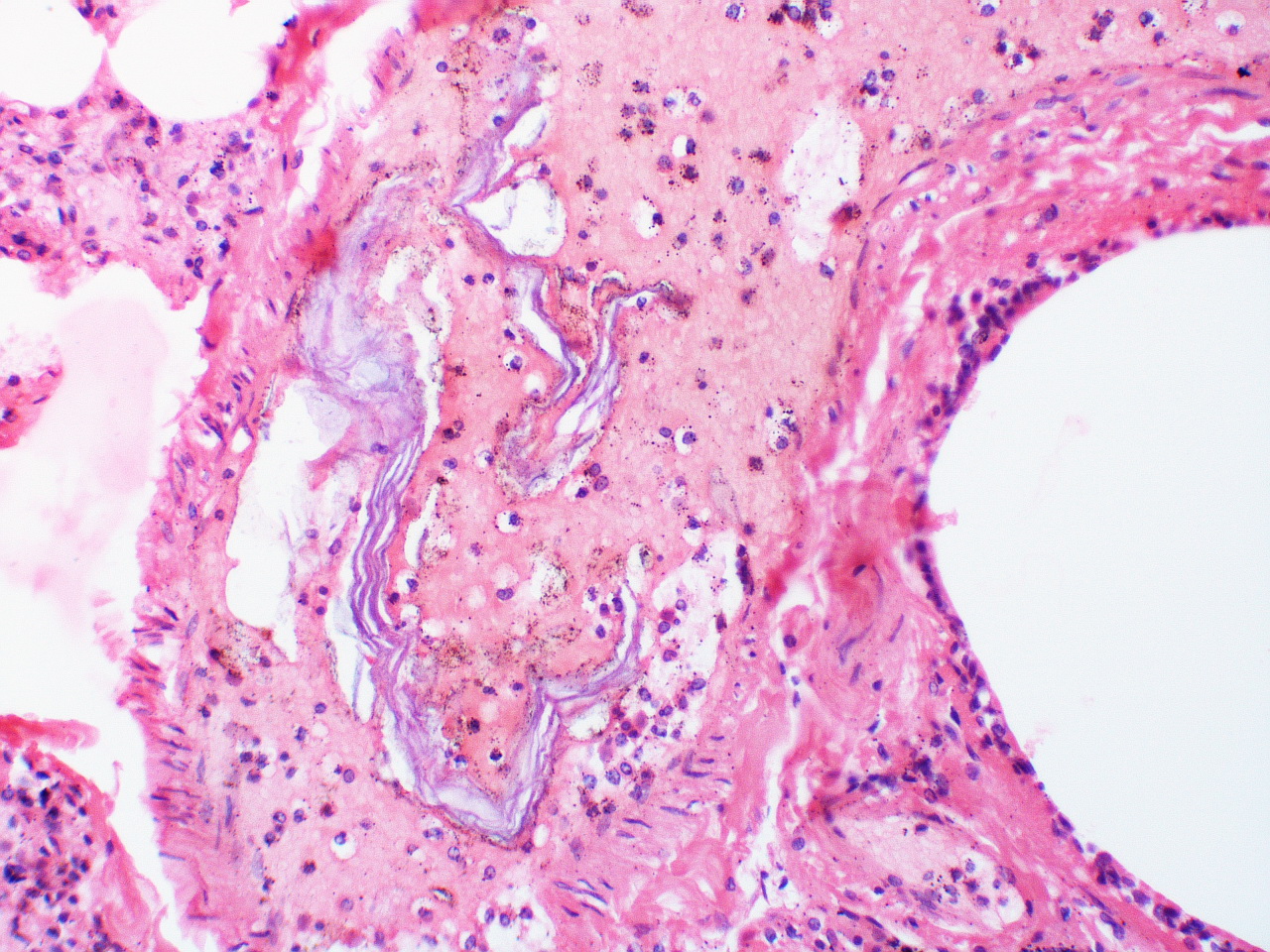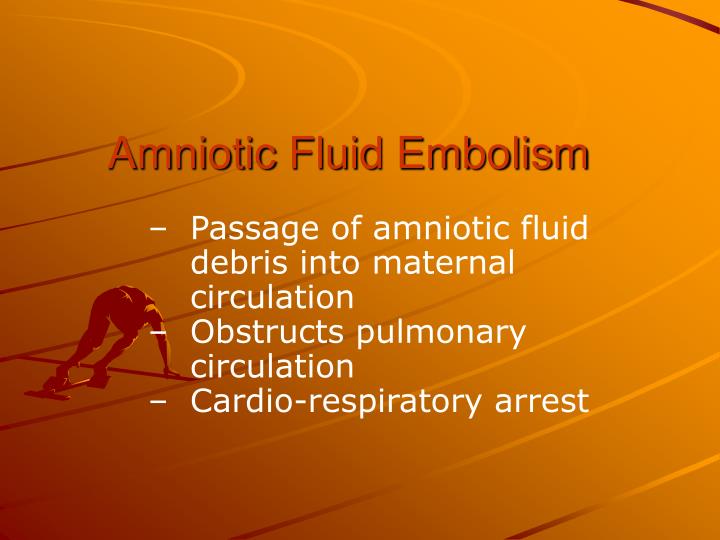
Amniotic fluid embolises to the pulmonary circulation and the patient responds with the rapid development of a complex constellation of findings with sudden cardiovascular collapse, acute left ventricular failure with pulmonary oedema, disseminated intravascular coagulation and neurological impairment.

A prospective, national study of AFE is being undertaken by the United Kingdom Obstetric Surveillance System (UKOSS) and has currently found an estimated incidence in the UK of 1.7 cases per 100,000 maternities.Analysis of UK data has shown an increased risk in older, ethnic-minority women and an association between postnatal AFE and caesarean delivery. Placenta praevia and placental abruption appear to increase the risk 3- to 10-fold. Internationally it has been found to be significantly associated with induction of labour and maternal age.

11 women were reported as having died of AFE in the four years between 2009-2012.


 0 kommentar(er)
0 kommentar(er)
